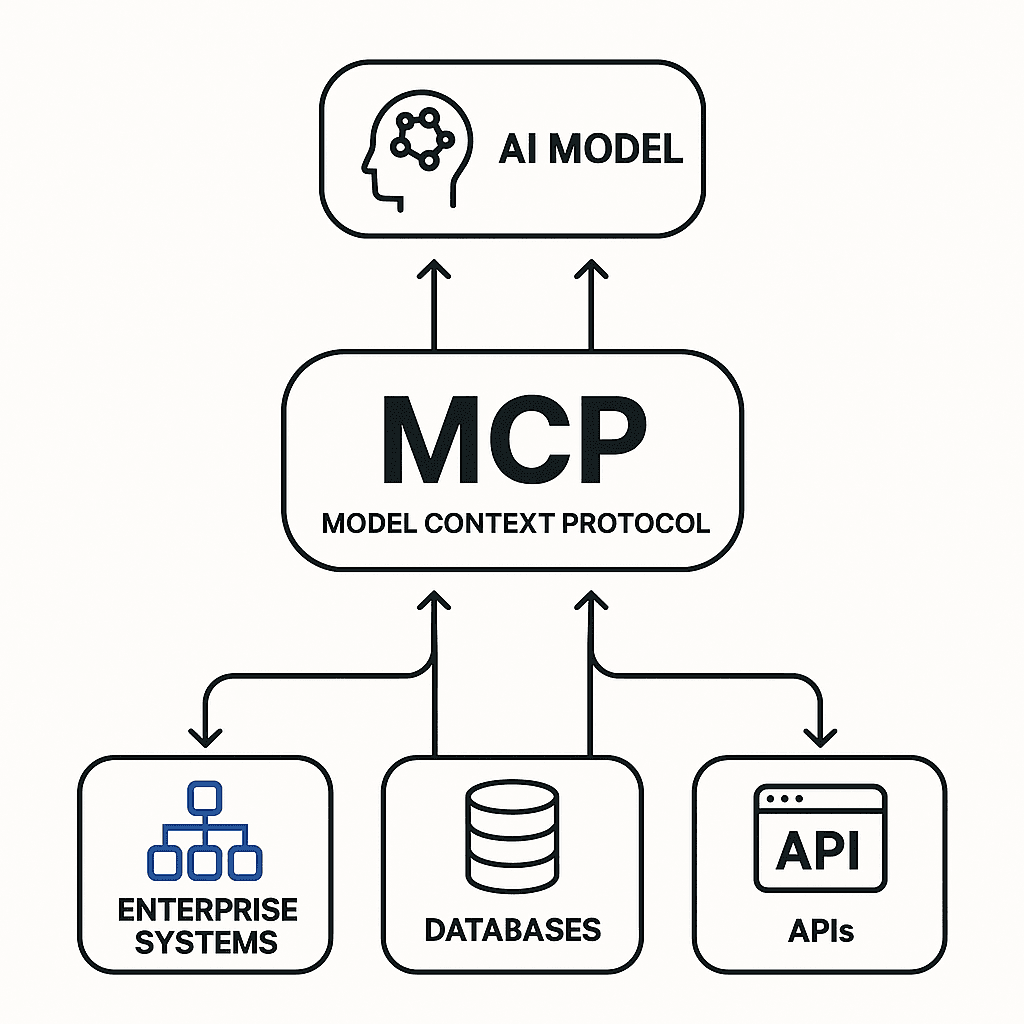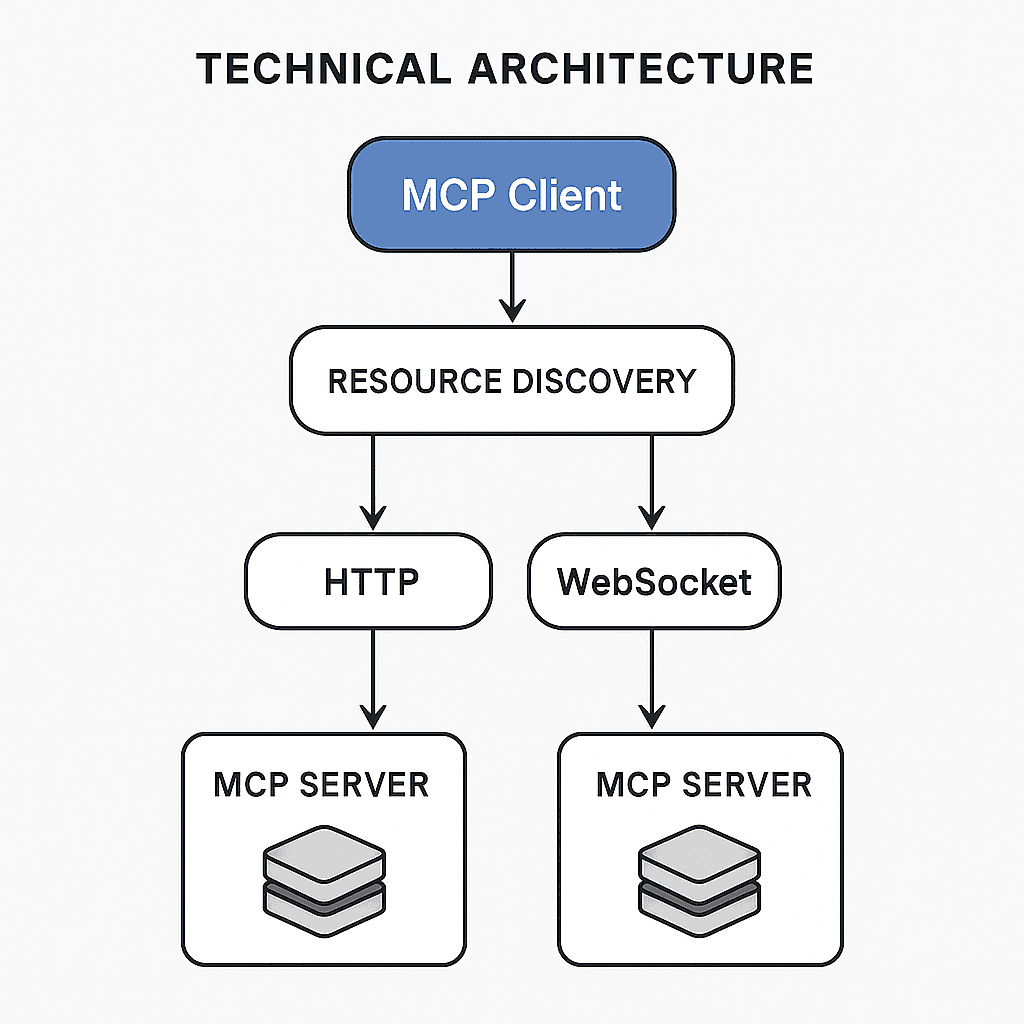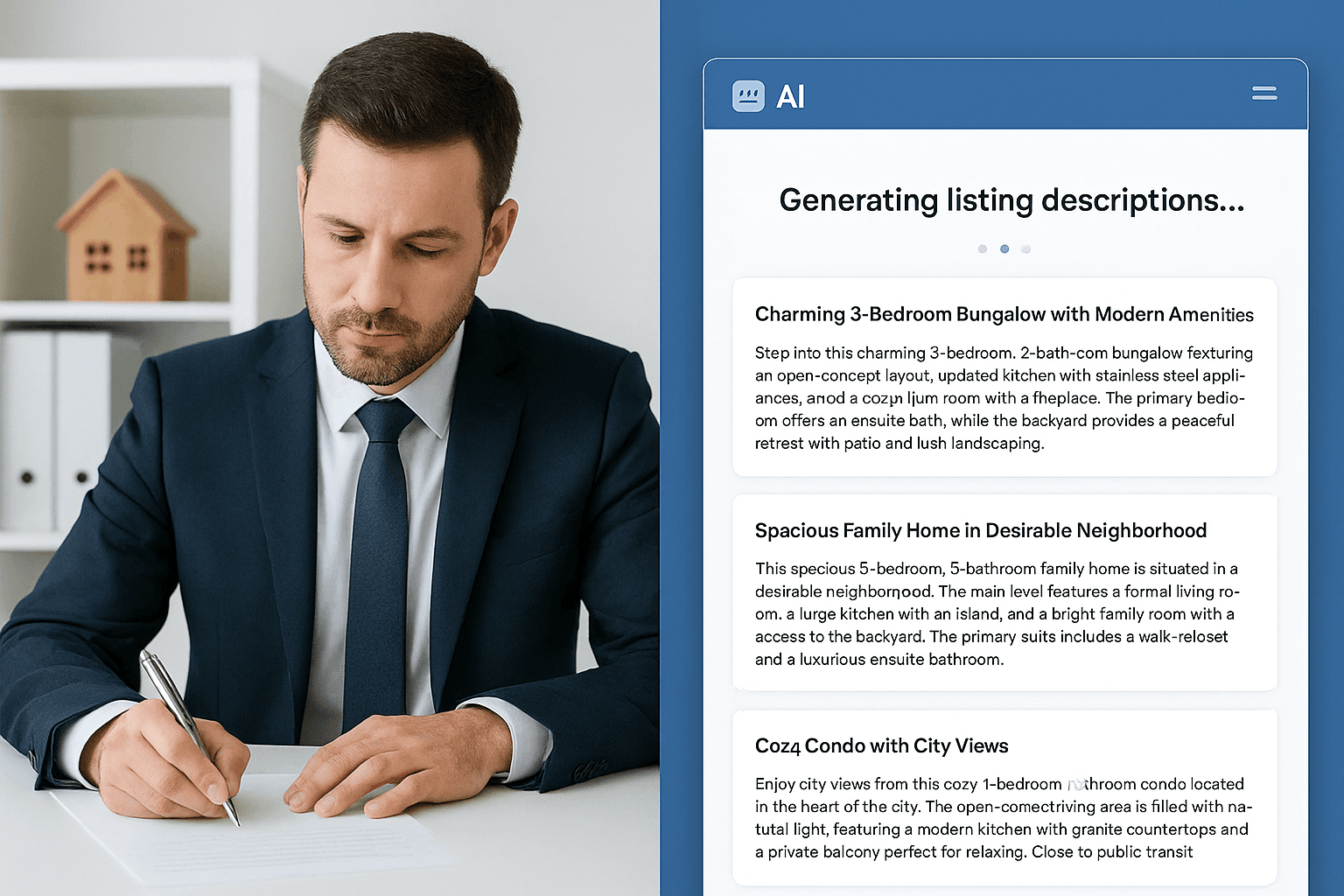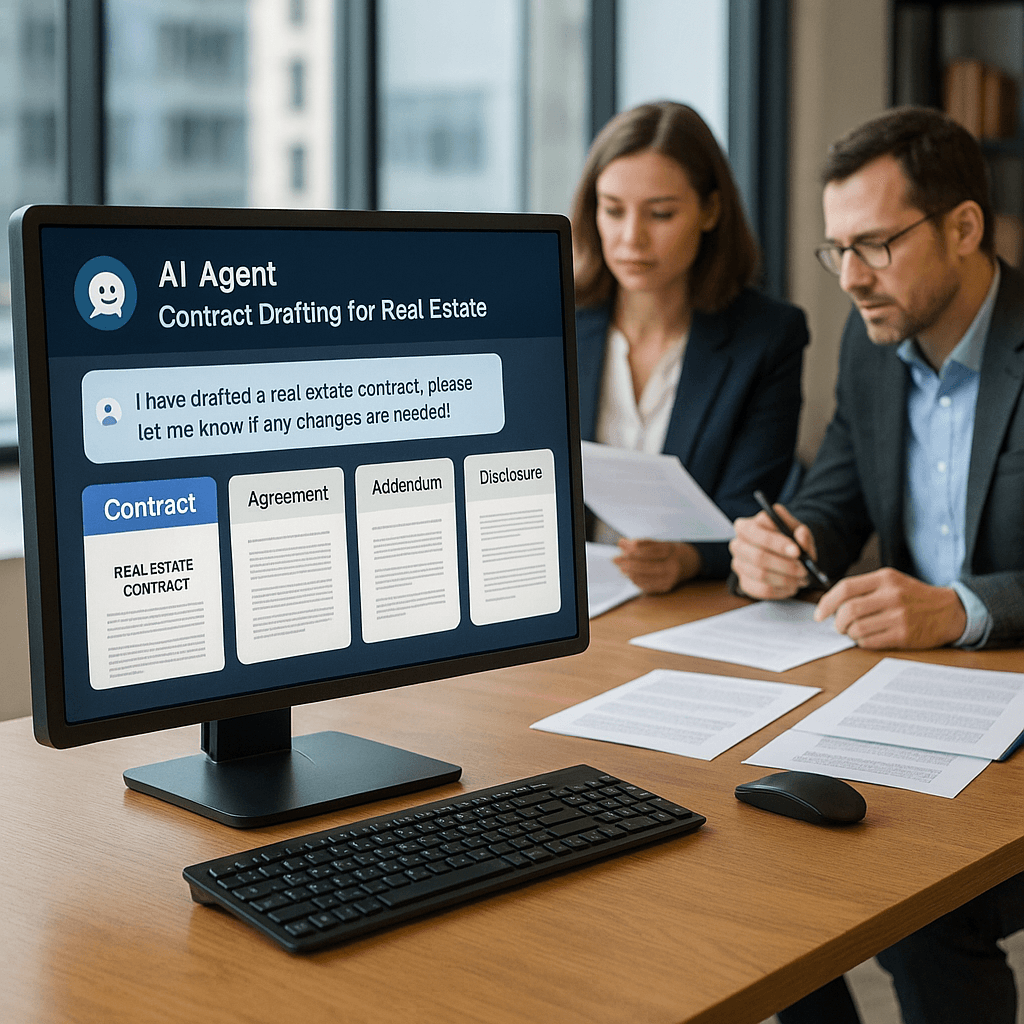The Model Context Protocol (MCP) is revolutionizing how AI systems connect with external data and tools, establishing itself as the universal standard for AI integration. Released by Anthropic in November 2024 as an open-source protocol, MCP addresses one of the biggest challenges in AI development: connecting powerful language models with the vast ecosystem of data sources and applications they need to be truly useful.
Understanding Model Context Protocol
Model Context Protocol serves as a universal, open standard for connecting AI systems with data sources, replacing fragmented integrations with a single protocol. Think of MCP as the "universal USB-C" for AI applications—instead of building custom connectors for every data source, developers can use one unified protocol to connect AI agents with databases, APIs, file systems, cloud services, and enterprise applications.
Before MCP, if you wanted an AI model to access, say, your Google Drive, customer database, and Slack, you'd likely implement three different plugins or connectors – each with its own API and quirks. This fragmentation meant a lot of duplicated effort and a higher chance of bugs or stale integrations. MCP eliminates this complexity by providing a single, standardized approach.

Core Architecture and Components
Client-Server Framework
MCP follows a client-server architecture: MCP clients are components integrated within AI applications (like Claude or other LLMs) that facilitate interaction with external systems. This design enables flexible, scalable connections that can grow with your application needs.
MCP Clients: These are AI applications like Claude Desktop, coding assistants, or custom AI agents that need access to external data. Clients can discover available resources, request data, and execute actions through the standardized protocol.
MCP Servers: These are applications or services that expose their data and functionality through the MCP protocol. To help developers start exploring, Anthropic has shared pre-built MCP servers for popular enterprise systems like Google Drive, Slack, GitHub, Git, Postgres, and Puppeteer.
Resource Management
Resources are a core primitive in the Model Context Protocol (MCP) that allow servers to expose data and content that can be read by clients and used as context for LLM interactions. The protocol enables dynamic resource discovery, meaning AI agents can automatically find available data sources and understand their capabilities without manual configuration.

How MCP Works in Practice
Connection Establishment
When an MCP client wants to connect to a server, they begin with a handshake process that negotiates capabilities, authentication methods, and protocol versions. This ensures both systems can communicate effectively and securely.
Resource Discovery
Once connected, clients can discover available resources through standardized endpoints. For example, an AI agent connecting to a document management system can automatically discover available folders, file types, and search capabilities without needing pre-configured knowledge.
Data Access and Actions
MCP provides a universal interface for reading files, executing functions, and handling contextual prompts. An AI agent might read customer information from a CRM system, analyze market data from multiple sources, and then update records or send notifications—all through the same standardized protocol.
Real-World Applications
Development and Coding
MCP has transformed AI coding assistants. Instead of working with limited context, AI agents can now access version control systems, project documentation, and issue trackers simultaneously. This enables more accurate code suggestions and better understanding of project requirements.
Development tools companies including Zed, Replit, Codeium, and Sourcegraph are working with MCP to enhance their platforms—enabling AI agents to better retrieve relevant information to further understand the context around a coding task and produce more nuanced and functional code with fewer attempts.
Business Process Automation
Enterprises leverage MCP to create intelligent automation workflows. AI agents can access multiple business systems—CRM platforms, inventory databases, financial tools—and make informed decisions based on comprehensive data analysis.
Early adopters like Block and Apollo have integrated MCP into their systems to streamline operations and enhance their AI-powered services with better contextual understanding.
Customer Service Enhancement
MCP enables AI chatbots to access customer databases, support ticket systems, and knowledge bases simultaneously. This creates more personalized and accurate customer interactions, as AI agents can provide contextual responses based on complete customer history and current system status.
Data Analysis and Reporting
By providing AI models with access to relevant data sources in real-time, MCP allows them to develop a deeper understanding of the context surrounding queries. Instead of relying solely on their training data, models can draw on current, organization-specific information to provide more accurate responses.
Industry Adoption and Ecosystem
Major Platform Integration
The protocol has gained remarkable traction since its November 2024 release. By February 2025, developers had already created over 1,000 MCP servers for various data sources and services. Major AI providers have embraced the standard:
OpenAI officially adopted the MCP in March 2025, following a decision to integrate the standard across its products, including the ChatGPT desktop app, OpenAI's Agents SDK, and the Responses API.
Demis Hassabis, CEO of Google DeepMind, confirmed in April 2025 MCP support in the upcoming Gemini models and related infrastructure, describing the protocol as "rapidly becoming an open standard for the AI agentic era".
Enterprise Adoption
Companies across industries are implementing MCP for their AI initiatives. Companies like Goldman Sachs and AT&T have utilized AI models compatible with protocols like MCP to streamline various business functions, including customer service and code generation.
AWS offers hundreds of services, each with its own APIs and data formats. By adopting MCP as a standardized protocol for AI interactions, you can streamline integration between Amazon Bedrock language models and AWS data services.
Development Tool Integration
Platforms such as Replit, Codeium, and Sourcegraph have adopted MCP to enhance their AI agents, enabling these tools to perform tasks on behalf of users with greater efficiency and accuracy. Several code editors and IDEs have adopted support for the protocol, including Sourcegraph Cody (which implements MCP through OpenCtx).
Security and Compliance Features
Authentication and Authorization
MCP servers are now officially classified as OAuth Resource Servers. This might seem like a small semantic change, but it has significant implications for security and discovery. The protocol implements robust security measures including OAuth 2.0, API key management, and role-based access control.
Data Privacy Protection
MCP clients are now required to implement Resource Indicators, as specified in RFC 8707. By using a resource indicator in the token request, a client explicitly states the intended recipient (the "audience") of the access token. These capabilities are essential for applications handling sensitive business information.
Enterprise-Grade Security
Microsoft is building in OS-level safeguards (for example, user consent prompts, enterprise policies for MCP usage) as part of its implementation, demonstrating the protocol's readiness for enterprise deployment.
Performance and Optimization
Connection Efficiency
With MCP, AI systems don't need to reprocess information they've already encountered. The protocol manages context efficiently by maintaining state between interactions, storing relevant information in a structured way, and exposing standardized endpoints for data retrieval.
Scalable Architecture
The protocol's modular design enables horizontal scaling. Organizations can deploy multiple MCP servers and distribute load across different systems without modifying core AI applications.
Resource Optimization
MCP was explicitly designed to solve this "many-to-many" integration problem. Using MCP, an AI tool and a data service that both support the protocol can work together out of the box, without additional glue code.
Future Development and Standards
Evolving Specifications
The latest changelog, released on June 18, 2025, introduces updates that clarify how authorization should be handled for MCP Servers and how MCP Clients should implement Resource Indicators to prevent malicious servers from obtaining access tokens.
Community Growth
The open-source nature of MCP has fostered a vibrant developer community, leading to continuous enhancements and a growing repository of tools and integrations. The ecosystem is rapidly enriching with more than 250 servers available in early 2025.
Industry Standardization
MCP is rapidly becoming the de facto standard for AI-tool integration across the industry. Unlike proprietary plugin frameworks tied to a single product, MCP is model-agnostic and open – any developer or company can adopt it without permission.
Key Differences: MCP vs Function Calling
While both approaches enable AI systems to interact with external services, they represent fundamentally different paradigms:
Integration Approach
Function Calling: Requires defining specific functions for each service integration, with custom authentication and error handling for every connection.
MCP: MCP replaces these custom pipelines with one standard protocol. You can plug any data source or service into the model using the same method, drastically simplifying development.
Scalability
Function Calling: Adding new capabilities requires code modifications, testing, and deployment cycles for each integration.
MCP: Custom integrations don't scale well. Every time an API changes or you adopt a new AI model, you have to redo work. It becomes a maintenance nightmare over time. MCP solves this by enabling new capabilities through additional MCP servers without modifying core applications.
Resource Discovery
Function Calling: Functions must be predefined and registered, limiting dynamic capability expansion.
MCP: Enables dynamic resource discovery, allowing AI agents to find and utilize new capabilities at runtime.
Development Workflow
Function Calling: Developers implement separate integration code for each external service.
MCP: Anthropic designed MCP to standardize the interface between AI assistants and data sources, allowing developers to focus on business logic while leveraging standardized protocol implementations.
Conclusion
Following its announcement, the protocol was adopted by major AI providers, including OpenAI and Google DeepMind. Model Context Protocol represents a fundamental shift in AI development, providing the standardized foundation needed for building sophisticated, connected AI applications. Its ability to simplify integrations, enable dynamic resource discovery, and provide enterprise-grade security makes it essential for modern AI development.
Anthropic designed MCP with the aim of helping frontier models produce better, more relevant responses by breaking down data silos. As major technology companies adopt MCP and the ecosystem continues growing, developers who master this protocol will be positioned to create more powerful, efficient, and scalable AI solutions.
Ready to implement MCP in your next Gen.AI project? Contact t3c.ai for expert guidance on building cutting-edge AI solutions with Model Context Protocol.




 Made with Superblog
Made with Superblog